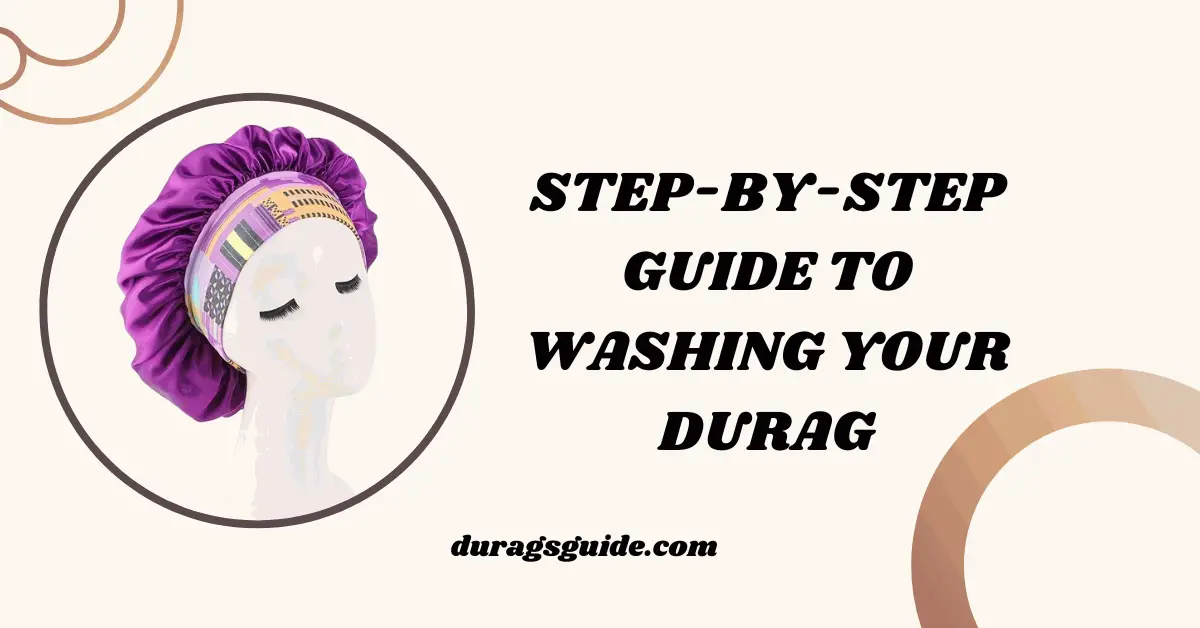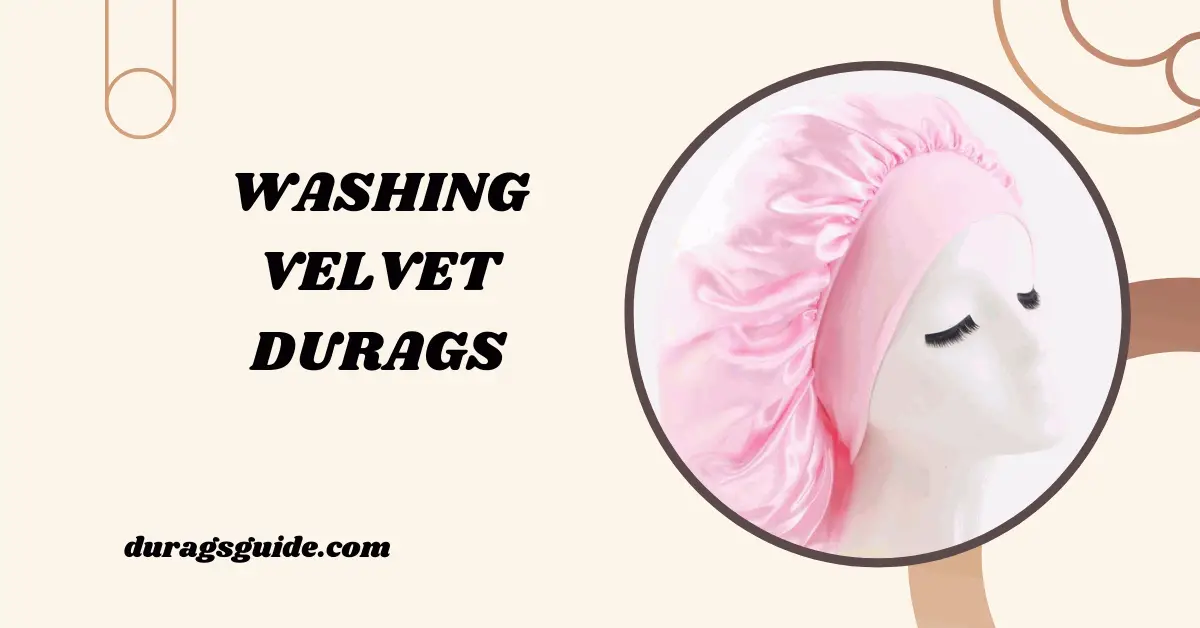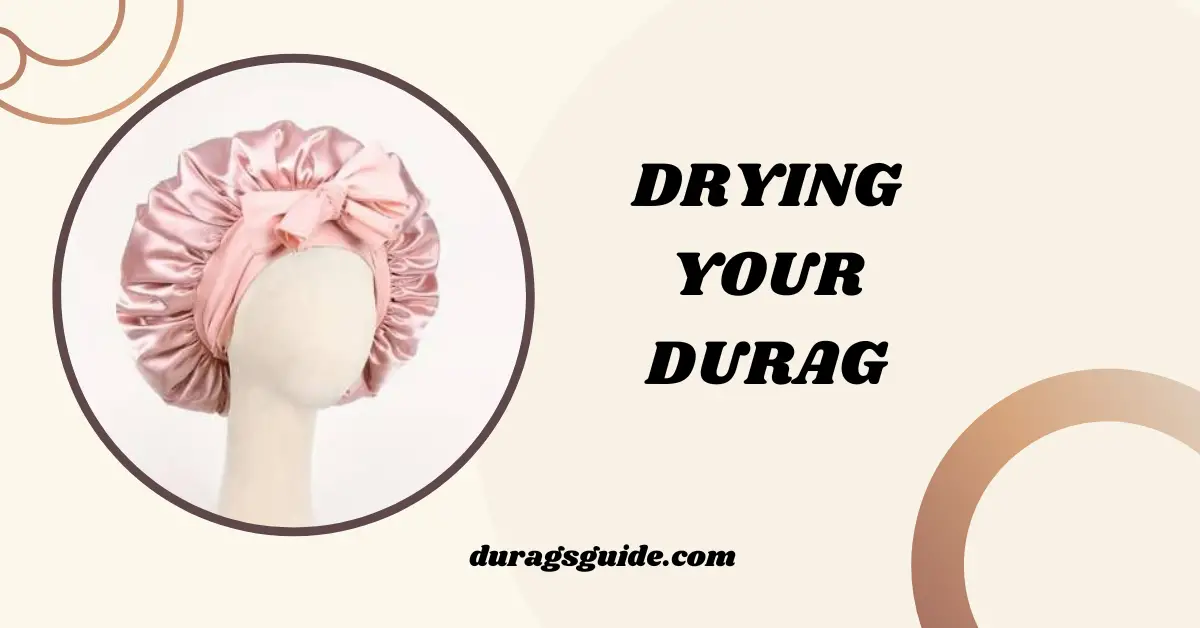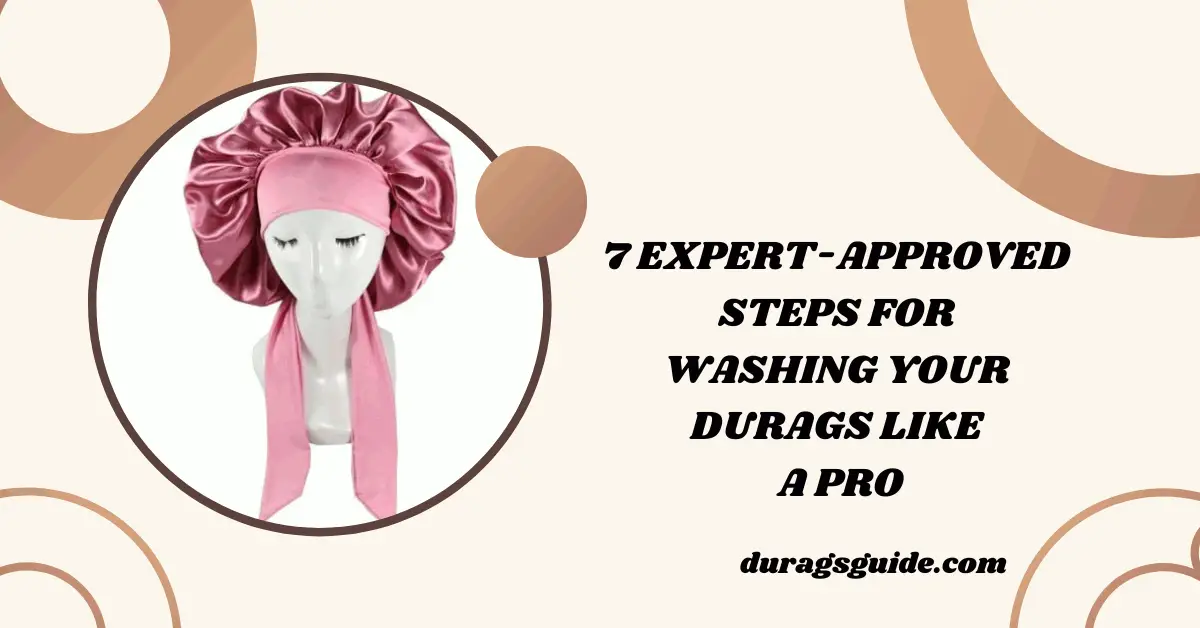
Introduction
Welcome to our comprehensive guide on washing your durags like a pro! Whether you’re new to wearing durags or a seasoned veteran, knowing how to properly clean and care for your durags is essential for maintaining their quality and longevity. In this article, we’ll walk you through 7 Expert-Approved Steps for Washing Your Durags Like a Pro to ensure that your durags stay fresh, clean, and ready to use whenever you need them. Let’s dive in!
Why Washing Your Durag is Important
Your durag is more than just a fashion statement; it’s an essential part of your grooming routine. Here’s why keeping it clean is crucial:
- Hygiene: Durags come into close contact with your hair and scalp, accumulating dirt, oils, and sweat over time. Regular washing helps remove these impurities, promoting scalp health and preventing odor.
- Maintaining Durability: Washing your durag removes dirt and debris that can weaken the fabric over time. By keeping it clean, you prolong its lifespan and ensure it retains its shape and elasticity.
- Preventing Skin Irritation: A dirty durag can harbor bacteria and fungi, leading to skin irritation and even infections. Washing it regularly helps eliminate these harmful microorganisms, reducing the risk of skin issues.
- Enhancing Appearance: Clean, well-maintained durags look better and can complement your overall style. Washing removes stains and odors, ensuring your durag always looks fresh and presentable.
- Improving Durag Effectiveness: A clean durag provides better compression and coverage, which is essential for creating waves or maintaining hairstyles. Washing removes buildup that can interfere with the durag’s function, allowing it to perform its intended purpose effectively.

Step-by-Step Guide to Washing Your Durag
Washing your durag is an essential part of maintaining its cleanliness and longevity. Follow these step-by-step instructions for a thorough cleaning:
- Gather Supplies: Before you begin, gather all the necessary supplies. You’ll need mild detergent, lukewarm water, a basin or sink, and a clean towel.
- Prepare the Solution: Fill the basin or sink with lukewarm water. Add a small amount of mild detergent to create a soapy solution. Make sure the detergent is thoroughly dissolved in the water.
- Soak the Durag: Submerge the durag completely in the soapy water. Gently agitate the water to ensure the detergent penetrates the fabric fibers.
- Hand Wash: Using your hands, gently rub the durag to remove any dirt, oil, or product buildup. Pay attention to any areas with stains or discoloration, and continue to massage them until they’re clean.
- Rinse Thoroughly: Once you’ve cleaned the durag, drain the soapy water from the basin or sink. Rinse the durag under lukewarm running water until all traces of detergent are removed.
- Remove Excess Water: Gently squeeze the durag to remove excess water. Avoid wringing or twisting the fabric, as this can cause damage or stretching.
- Air Dry: Lay the durag flat on a clean towel to air dry. Avoid hanging it, as this can cause stretching or distortion of the fabric. Allow the durag to dry completely before wearing or storing it.
- Optional: Machine Wash: If your durag is machine washable, you can launder it in a gentle cycle with similar colors. Use mild detergent and avoid bleach or fabric softeners.
- Avoid Heat: Never use hot water or high heat settings when washing or drying your durag, as this can damage the fabric and cause shrinkage.
- Store Properly: Once your durag is clean and dry, store it in a cool, dry place away from direct sunlight. Avoid folding or creasing the fabric, as this can lead to wrinkles or permanent creases.

Washing Silk Durags
Silk durags require special care to maintain their luxurious feel and appearance. Here’s how to wash silk durags effectively:
- Check the Label: Before washing your silk durag, check the care label for specific instructions. Some silk durags may be labeled as dry clean only, in which case you should avoid washing them at home.
- Hand Wash: If your silk durag is labeled as hand washable, fill a basin or sink with cold water and add a small amount of mild detergent. Swirl the water to create a soapy solution.
- Soak the Durag: Submerge the silk durag in the soapy water and gently agitate it with your hands. Avoid rubbing or scrubbing the fabric, as this can cause damage.
- Rinse Carefully: After soaking, drain the soapy water and rinse the silk durag under cold running water. Be gentle to prevent stretching or distorting the fabric.
- Remove Excess Water: Gently squeeze the durag to remove excess water. Avoid wringing or twisting the fabric, as this can damage the delicate fibers.
- Air Dry: Lay the silk durag flat on a clean towel to air dry. Avoid hanging it, as this can cause stretching. Allow the durag to dry completely before wearing or storing it.
- Ironing (Optional): If your silk durag is wrinkled after washing, you can use a cool iron to smooth out any creases. Place a clean cloth over the durag before ironing to protect the fabric.
- Dry Cleaning: For silk durags labeled as dry clean only, take them to a professional cleaner for laundering. Dry cleaning will help preserve the delicate fibers and maintain the durag’s quality.
- Storage: Store your clean silk durag in a cool, dry place away from direct sunlight. Avoid folding or creasing the fabric to prevent wrinkles.

Washing Velvet Durags
Velvet durags require gentle care to preserve their soft texture and prevent damage. Here’s how to wash velvet durags effectively:
- Check the Label: Before washing your velvet durag, check the care label for specific instructions. Some velvet durags may be labeled as dry clean only, while others may be hand washable.
- Spot Cleaning: If your velvet durag has minor stains or spots, you can spot clean it instead of washing the entire durag. Use a small amount of mild detergent or upholstery cleaner and a soft brush to gently scrub the affected area.
- Hand Wash: If your velvet durag is labeled as hand washable, fill a basin or sink with cold water and add a small amount of mild detergent. Swirl the water to create a soapy solution.
- Soak the Durag: Submerge the velvet durag in the soapy water and gently agitate it with your hands. Allow the durag to soak for a few minutes to loosen dirt and debris.
- Rinse Carefully: After soaking, drain the soapy water and rinse the velvet durag under cold running water. Be gentle to prevent damaging the delicate velvet fibers.
- Remove Excess Water: Gently squeeze the durag to remove excess water. Avoid wringing or twisting the fabric, as this can damage the velvet pile.
- Air Dry: Lay the velvet durag flat on a clean towel to air dry. Avoid hanging it, as this can cause the velvet pile to become misshapen. Allow the durag to dry completely before wearing or storing it.
- Brushing (Optional): Once the velvet durag is dry, you can use a soft brush to gently fluff up the velvet pile and remove any flattened areas. Brush in the direction of the pile to avoid damaging the fabric.
- Dry Cleaning: For velvet durags labeled as dry clean only, take them to a professional cleaner for laundering. Dry cleaning will help preserve the delicate velvet fibers and maintain the durag’s quality.
- Storage: Store your clean velvet durag in a cool, dry place away from direct sunlight. Avoid folding or creasing the fabric to prevent wrinkles and maintain its soft texture.

How Often to Wash Your Durag
Knowing how often to wash your durag is essential for maintaining its cleanliness and prolonging its lifespan. Here’s a guide to help you determine the frequency of washing based on different factors:
- Personal Hygiene: Your personal hygiene habits play a significant role in how often you should wash your durag. If you sweat heavily or have oily hair, you may need to wash your durag more frequently to prevent buildup of dirt, oil, and odor.
- Activity Level: Consider your activity level and lifestyle when deciding how often to wash your durag. If you lead an active lifestyle, engage in sports or exercise regularly, or work in environments where you sweat profusely, you may need to wash your durag more frequently to maintain cleanliness.
- Durag Material: The material of your durag also influences how often it should be washed. Different materials have varying levels of absorbency and odor retention. For example, silk and velvet durags may require less frequent washing compared to cotton durags.
- Hair Type: Your hair type can affect how often you need to wash your durag. If you have oily hair or scalp conditions such as dandruff, you may need to wash your durag more frequently to prevent oil and product buildup. On the other hand, if you have dry hair or scalp, washing your durag too often may strip away natural oils and cause dryness.
- Weather Conditions: Consider the weather conditions in your area when determining how often to wash your durag. In hot and humid climates, you may sweat more and need to wash your durag more frequently to maintain freshness. In colder climates or during the winter months, you may be able to go longer between washes.
- Daily Wear: If you wear your durag daily, you may need to wash it more frequently than if you only wear it occasionally. Daily wear can lead to faster accumulation of dirt, sweat, and oils, requiring more frequent washing to keep your durag clean and hygienic.
- Smell Test: One simple way to determine if your durag needs washing is to perform a smell test. If your durag smells unpleasant or has an odor even after airing it out, it’s time to wash it.
- Visual Inspection: Additionally, visually inspect your durag for signs of dirt, stains, or discoloration. If you notice any visible signs of dirt or buildup, it’s a good indication that your durag needs washing.
- Trial and Error: Ultimately, the frequency of washing your durag may vary depending on individual factors. It may take some trial and error to find the right washing schedule that works best for you and your durag.
- Consistency: Once you’ve established a washing routine that suits your needs, try to maintain consistency. Regular washing and proper care will help prolong the life of your durag and keep it looking and feeling fresh.

Additional Tips for Durag Care
In addition to washing your durag, proper care is essential for maintaining its quality and prolonging its lifespan. Here are some additional tips to help you care for your durag effectively:
- Store Properly: When not in use, store your durag in a clean and dry place. Avoid leaving it in damp or humid environments, as this can promote mold and mildew growth. Consider using a breathable storage bag or container to protect your durag from dust and debris.
- Avoid Overstretching: Be gentle when handling your durag to avoid overstretching the fabric or damaging the seams. Avoid pulling or tugging on the straps excessively, as this can cause the elastic to lose its elasticity over time.
- Rotate Durags: If you have multiple durags, consider rotating them regularly to prevent excessive wear and tear on any one durag. This can help distribute the use more evenly and prolong the lifespan of each durag.
- Follow Manufacturer’s Instructions: Pay attention to any care instructions provided by the manufacturer of your durag. Follow these instructions carefully to ensure proper care and maintenance, including washing temperature, drying methods, and any special considerations for the fabric or design.
- Use Gentle Detergent: When washing your durag, opt for a mild or gentle detergent to avoid harsh chemicals that can damage the fabric or cause irritation to your skin. Avoid using bleach or fabric softeners, as these can degrade the fabric and affect its performance.
- Hand Wash Delicate Fabrics: For delicate fabrics such as silk or velvet, hand washing is often recommended to prevent damage. Fill a sink or basin with lukewarm water and a small amount of gentle detergent, then gently agitate the durag in the water. Rinse thoroughly and squeeze out excess water before air drying.
- Machine Wash With Care: If machine washing is preferred or recommended for your durag, use a gentle cycle and cold water to minimize shrinkage and preserve the fabric. Place the durag in a mesh laundry bag or pillowcase to protect it from snagging or tangling with other items in the wash.
- Air Dry: Avoid using high heat when drying your durag, as this can damage the fabric and cause shrinkage. Instead, air dry your durag by laying it flat on a clean towel or drying rack. Avoid wringing out excess water, as this can misshape the durag and cause wrinkles.
- Avoid Excessive Sun Exposure: Prolonged exposure to direct sunlight can cause colors to fade and fabrics to degrade over time. When drying your durag outdoors, choose a shaded area or hang it in a well-ventilated space away from direct sunlight.
- Inspect Regularly: Periodically inspect your durag for any signs of damage or wear, such as loose threads, fraying seams, or stretched elastic. Address any issues promptly to prevent further damage and ensure your durag continues to provide optimal comfort and performance.

Spot Cleaning Your Durag
While regular washing is essential for maintaining your durag’s cleanliness, there may be instances where spot cleaning is necessary to address specific stains or spills. Here’s how to effectively spot clean your durag:
- Act Quickly: As soon as you notice a stain or spill on your durag, it’s essential to act quickly to prevent it from setting into the fabric. Blot the area gently with a clean cloth or paper towel to absorb as much of the liquid as possible without rubbing or spreading the stain.
- Identify the Stain: Different types of stains may require different cleaning methods. Before proceeding, identify the type of stain you’re dealing with to determine the most appropriate approach for removal. Common stains on durags include oil-based stains, food stains, sweat stains, and dirt.
- Use Gentle Cleaning Agents: For most stains, a mild detergent diluted in water can be effective for spot cleaning your durag. Mix a small amount of detergent with lukewarm water to create a cleaning solution. Avoid using harsh chemicals or bleach, as these can damage the fabric and cause discoloration.
- Spot Test: Before applying the cleaning solution to the stained area, perform a spot test on a small, inconspicuous area of the durag to ensure compatibility with the fabric. This will help prevent any adverse reactions or damage to the fabric.
- Apply the Cleaning Solution: Dip a clean cloth or sponge into the cleaning solution and gently dab the stained area of the durag. Avoid rubbing or scrubbing aggressively, as this can damage the fabric or cause the stain to spread. Instead, work from the outside of the stain towards the center to prevent spreading.
- Blot and Rinse: After applying the cleaning solution, blot the area with a clean, damp cloth to remove any excess detergent and lift the stain from the fabric. Rinse the area thoroughly with cool water to remove any remaining residue and prevent soap buildup.
- Air Dry: Allow the spot-cleaned area of the durag to air dry completely before wearing or storing it. Avoid using heat sources such as hair dryers or clothes dryers, as high heat can cause the stain to set or damage the fabric.
- Repeat if Necessary: Depending on the severity of the stain, you may need to repeat the spot cleaning process multiple times to fully remove the stain. Be patient and persistent, and avoid applying excessive force or agitation to the fabric.
- Consult Professional Cleaners: For stubborn or set-in stains that cannot be removed with home remedies, consider consulting professional cleaners who specialize in fabric care. They may have specialized cleaning techniques and products to effectively remove tough stains from your durag.
- Prevent Future Stains: To minimize the need for spot cleaning in the future, take proactive measures to prevent stains on your durag. Avoid wearing your durag in messy or hazardous environments, and be mindful of activities that may cause spills or stains. Additionally, consider using protective sprays or coatings to repel liquids and prevent stains from penetrating the fabric.

Drying Your Durag
Properly drying your durag after washing is crucial to maintain its shape, fabric integrity, and overall quality. Here’s a step-by-step guide to effectively drying your durag:
- Gently Remove Excess Water: After washing your durag, gently squeeze or press it to remove excess water. Avoid wringing or twisting the fabric, as this can distort its shape and damage the fibers.
- Avoid High Heat: When drying your durag, it’s essential to avoid high heat sources such as clothes dryers or direct sunlight, as excessive heat can cause shrinkage, fabric damage, and color fading. Instead, opt for gentle drying methods to preserve the integrity of the fabric.
- Air Dry: The most recommended method for drying your durag is to air dry it naturally at room temperature. Lay the damp durag flat on a clean, dry towel or drying rack in a well-ventilated area. Ensure that the durag is spread out evenly to allow for even drying.
- Shape Restoration: While the durag is still damp, take the opportunity to restore its shape and smooth out any wrinkles or creases. Gently pat and smooth the fabric with your hands to help reshape the durag and maintain its structure.
- Flip Occasionally: To promote even drying and prevent moisture buildup, flip the durag over periodically during the drying process. This ensures that both sides of the fabric receive adequate airflow and drying time.
- Avoid Hanging: Avoid hanging your durag by the strings or edges while drying, as this can cause stretching and distortion of the fabric. Instead, lay it flat or drape it over a drying rack to maintain its shape and prevent damage.
- Patience is Key: Allow your durag to air dry naturally at its own pace, avoiding the temptation to expedite the process with heat sources or excessive handling. Depending on environmental conditions and fabric thickness, drying times may vary.
- Check for Moisture: Before storing or wearing your durag, ensure that it is completely dry to the touch. Check for any remaining moisture or dampness, especially in seams and folds, as trapped moisture can lead to mildew and odor buildup over time.
- Avoid Ironing: Resist the urge to iron your durag to remove wrinkles, as excessive heat can damage the fabric, particularly silk or delicate materials. Instead, opt for gentle reshaping by hand or steam if necessary.
- Store Properly: Once fully dry, store your durag in a clean, dry place away from direct sunlight and moisture. Consider folding it neatly or rolling it up to prevent wrinkles and maintain its shape until the next use.

7 Expert-Approved Steps for Washing Your Durags Like a Pro
| Step Number | Washing Method | Description |
| 1 | Hand Wash | Gently wash your durag by hand in lukewarm water using a mild detergent or soap. |
| 2 | Machine Wash | Place your durag in a mesh laundry bag and wash it on a gentle cycle with similar colors. |
| 3 | Washing Silk Durags | Hand wash silk durags with cold water and a gentle detergent, avoiding agitation or wringing. |
| 4 | Washing Velvet Durags | Spot clean velvet durags with a damp cloth or hand wash them gently in cold water. |
| 5 | How Often to Wash | Wash your durag every 1-2 weeks or as needed, depending on usage and personal preference. |
| 6 | Additional Tips | Use a soft brush to remove stubborn stains, and avoid using bleach or harsh chemicals. |
| 7 | Drying Your Durag | Air dry your durag flat or on a drying rack away from direct sunlight to prevent damage. |

Conclusion
In conclusion, mastering the art of washing your durag is essential for maintaining its quality and ensuring it remains comfortable to wear. By following the expert-approved steps outlined in this guide, you can keep your durags clean and fresh, prolonging their lifespan and preserving their appearance. Remember to handle your durags with care, whether washing them by hand or using a machine, and always follow the specific instructions for different materials such as silk or velvet. With these tips, you can confidently maintain your durags like a pro, ensuring they continue to enhance your style and comfort for many wears to come.
FAQS
How to properly wash your durag?
To properly wash your durag, begin by hand washing it in lukewarm water with a mild detergent, gently rubbing it to remove dirt and oils. Rinse thoroughly, then air dry flat to maintain its shape and elasticity.
Can durags be washed in washing machine?
Yes, durags can typically be washed in a washing machine. It's best to use a gentle cycle with cold water and mild detergent to avoid damaging the fabric or compromising the shape of the durag. Always check the care instructions on the durag for specific washing guidelines.
How to wash durag in washing machine?
To wash a durag in a washing machine, place it in a mesh laundry bag to prevent snagging. Use a gentle cycle with cold water and mild detergent, then air dry to maintain its shape and quality.
Can you put silk durags in the washer?
Yes, you can wash silk durags in the washer, but it's best to use a gentle cycle with cold water and a mild detergent. Avoid using bleach or fabric softener, and opt for air drying to preserve the silk's delicate fibers and prevent damage.
Can you put a durag in the dryer?
It's generally not advisable to put a durag in the dryer, as the heat can damage the fabric and affect its elasticity. Air drying is a gentler method that helps maintain the durability and shape of the durag.
Are durags dryer safe?
Durags are generally not recommended for the dryer as the heat can damage the fabric and affect its elasticity. Air drying is a safer option to maintain their durability and shape.
How to dry durag fast?
To dry a durag quickly, gently squeeze out excess water, then lay it flat on a clean, dry towel. Roll the towel with the durag inside to absorb more moisture, then carefully unroll and hang the durag in a well-ventilated area to air dry completely. Avoid wringing or twisting the durag, as this can damage the fabric and distort its shape.
Can durags be washed?
Yes, durags can be washed. It's essential to follow the care instructions provided by the manufacturer to ensure proper cleaning and maintenance. Typically, durags can be hand washed or machine washed, depending on the fabric and construction.







